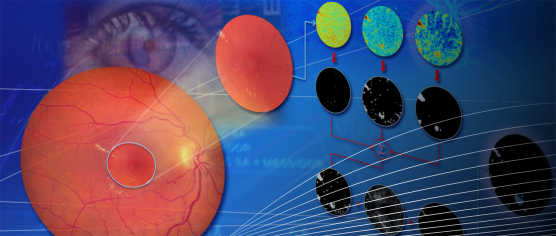C. Agurto, V.Murray, H. Yu, J.Wigdahl, M. Pattichis, S. Nemeth, E. S. Barriga, and P. Soliz

Diabetic Retinopathy (DR) is a complication of diabetes that affects up to 80% of diabetics around the world. DR is the second leading cause of blindness in the Western world, and the leading cause of blindness in the United States in the working age population. DR pathologies that occur on or near the fovea, such as clinically significant macular edema (CSME), represent a high risk for vision loss. CSME accounts for 75% of sight-threatening cases among diabetics. The presence of exudates, lipid residues of serous leakage from damaged capillaries, has been associated with CSME, especially if they are located one optic disc-diameter away from the fovea.
This work presents a computer-aided detection algorithm to identify exudates near the fovea, and thus improve the classification of CSME. Our method is based on a generalized optimization scheme of image decompositions. We combine information from different frequency scales through iterative thresholding bound selection to extract possible candidates. For each candidate region, we extract color, shape, and texture features that are used as inputs to a partial least squares (PLS) classifier. Our classification system achieves an area under the ROC curve (AUC) of 0.96 for detection of exudates. Given the optimization process and flexibility of the implementation, this methodology could be extended to the detection of different types of lesions that occurs in other eye diseases.
Tags: Amplitude-modulation frequency-modulation, clinically significant macular edema (CSME), diabetic retinopathy, partial least squares (PLS)

